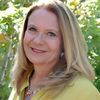"However long we live, life is short, so I work. And however important man becomes, he is nothing compared to the stars. There are secrets, dear sister, and it is for us to reveal them." -- Caroline Herschel (1750-1848), the first woman to discover a comet
Embroiled in a friendly linguistic kerfuffle over naming an advisory council for a new women's self-defense organization, my dear friend, Lee Sinclair, called a "timeout" to the process and picked a name. I met Lee through the National Women's Martial Arts Federation, of which we are both proud members. I was there as a representative of Impact Personal Safety, and Ms. Sinclair is the founder and executive director of No Means No Worldwide. The founding mothers of the advisory group had been going back and forth via e-mails over what to call themselves -- a process reminiscent of naming a baby or creating a book title. Naming is important. After the numerous exchanges, Sinclair decided to name her burgeoning advisory board "Halley's Comets," reflecting her desire to have a body of people whose work and style is sparkly, light and fast. That pretty much describes a comet. At the risk of complicating matters, I had to pipe up with "What comets were named after women?"
Given that I'm an ambassador for the National Women's History Project, as well as an adviser to No Means No Worldwide (NMNW), it's my personal and professional imperative to look at things through the telescope of all the missing women in history and on the current world stage. Sure enough, my husband jumped on the Internet and found out about women astronomers and the comets they identified.
Caroline Herschel was the first woman to "find" a comet, 45 years after Halley saw what is now called "Halley's Comet." Given that it can be seen with the naked eye, Halley's discovery wasn't so much a discovery as it was naming what, before that time, must have been either a terrifying or sacred astronomical event. Halley's Comet appears approximately every 75 years, so it's possible to see it twice in the span of a human life.
But Caroline Herschel had to use the newfangled telescope in 1786 to find the comet that was called, in its day, "The First Lady's Comet" and is now known as "Comet Herschel." She made history not only for being the first woman to make such a discovery, but for finding many comets in her lifetime. According to the May 1997 issue of "Universe" magazine, "Herschel's discoveries not only established a precedent for female astronomers, but remained a record for comet discoveries by women until the 1980s, when another female astronomer with a similar first name not only beat her record but firmly established herself in the history of comets. Her name: Carolyn Shoemaker."
Some of us have actually heard of Maria Mitchell, the first American woman to locate a comet in 1847, named "Miss Mitchell's Comet." It's no accident that Mitchell became an astronomer in her community of Nantucket, Massachusetts, because she came from a Quaker family. Quakers were well known for educating girls and boys equally. And as we all know, when any subjugated group -- whether because of race, class or gender -- is given the opportunity, they will excel in their fields. Behind every successful woman, you can almost always find a supportive dad or brother.
The upshot of this astronomical research resulted in Lee Sinclair deciding to call the new NMNW advisory board...drum roll, please..."Miss Mitchell's Comet Group!" Hey, if sports teams can call themselves "Jazz," "Banana Slugs," or, yes, even "Comets," we can call ourselves Mitchell's Comets!
Years ago, I attended a Carl Sagan lecture, and got in line during the Q & A portion of the evening. There were two lines, 10 deep on each side, mostly comprised of men and boys. There were only two females: me and a young girl. Dr. Sagan ran out of time, but wanted to make sure the gals got a chance to ask their questions since we were so out-numbered by the guys. The girl went first and asked something about heathen science. Sagan was gracious, but obviously a bit disappointed that she used her public platform to promulgate religion. I asked, "How do we interest more girls in science and math?" at which he lit up and spoke for another half hour. One of the things he emphasized was teaching EVERYONE about the women in science whose shoulders we all stand upon. He loved, respected and empowered women.
One of my favorite movies of all time, "Contact," starring Jodie Foster, was based on Sagan's novel of the same name. Released in 1997, the movie took on both the religious community and gender politics in science within the context of the scientific search for intelligent life in the galaxy. It's a great movie to commemorate women's history month. It's got suspense, conflict and is intellectually provocative. It also showcases Foster as Dr. Ellie Arroway, in a role very few women ever get a chance to play: scientific genius. Not accidentally, her loving father encourages her curiosity and spurs her toward greatness and having the courage to stand alone.
So, I now have a great new name and association to plug into my resumé, one that Carl Sagan would have loved: Member, "Miss Mitchell's Comets."
Note: This post appears both here and in my column in the March 4, 2010 issue of the Pasadena Weekly, for which it was written.
TAGSCaroline Herschel, Carolyn Shoemaker, No Means No Worldwide, comets, National Women's History Project, astronomy, Maria Mitchell, Quakers, Carl Sagan
